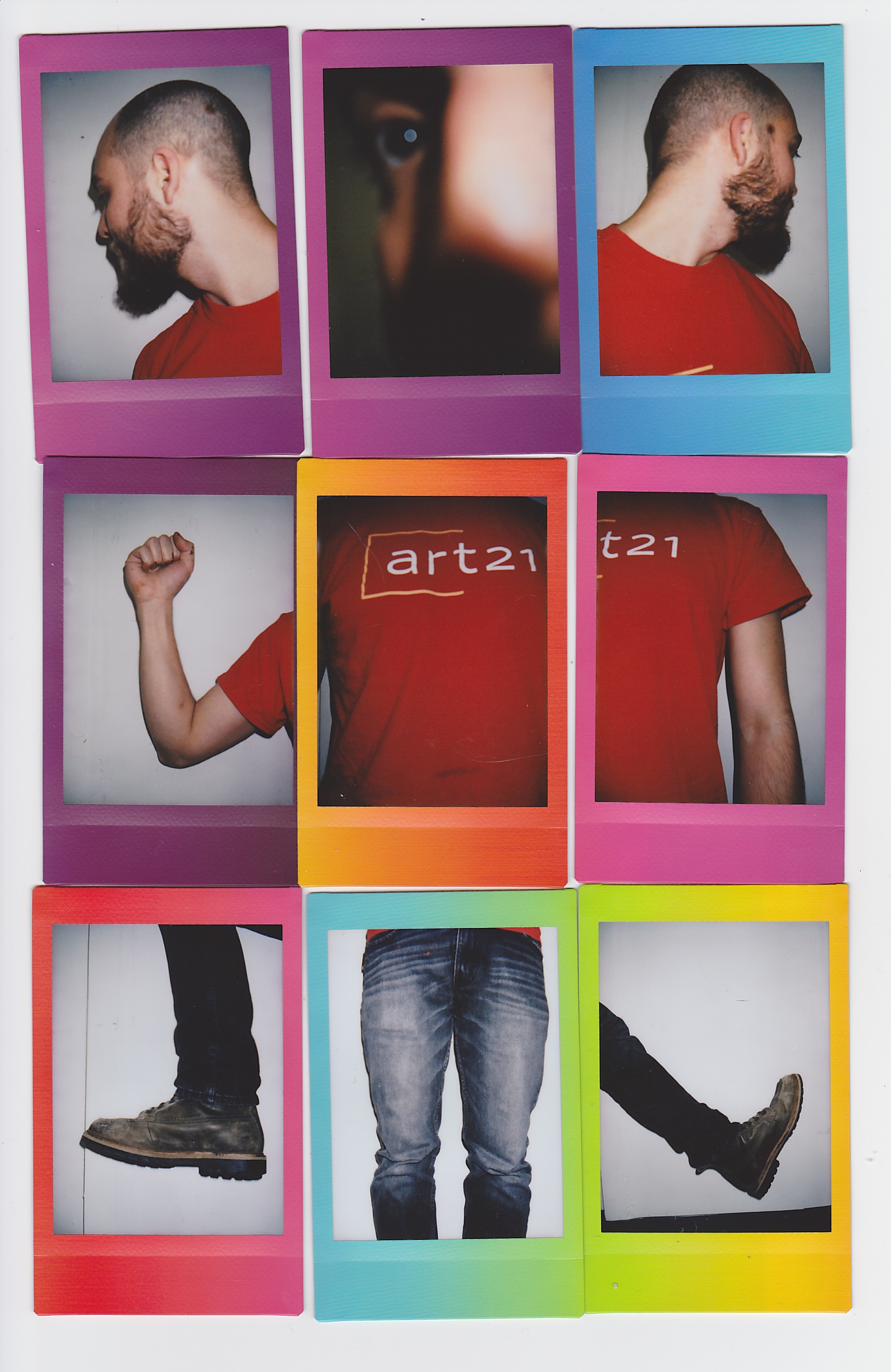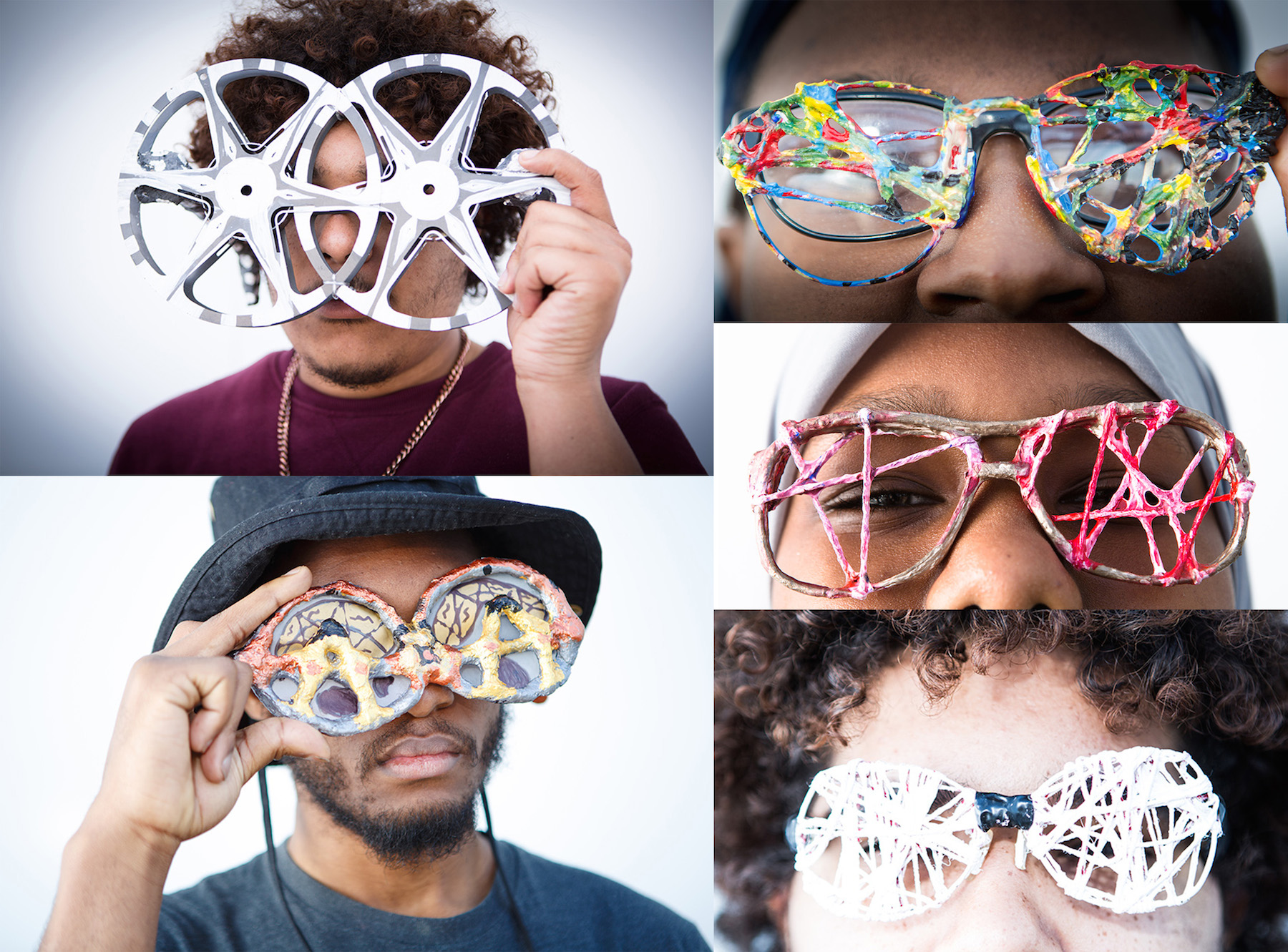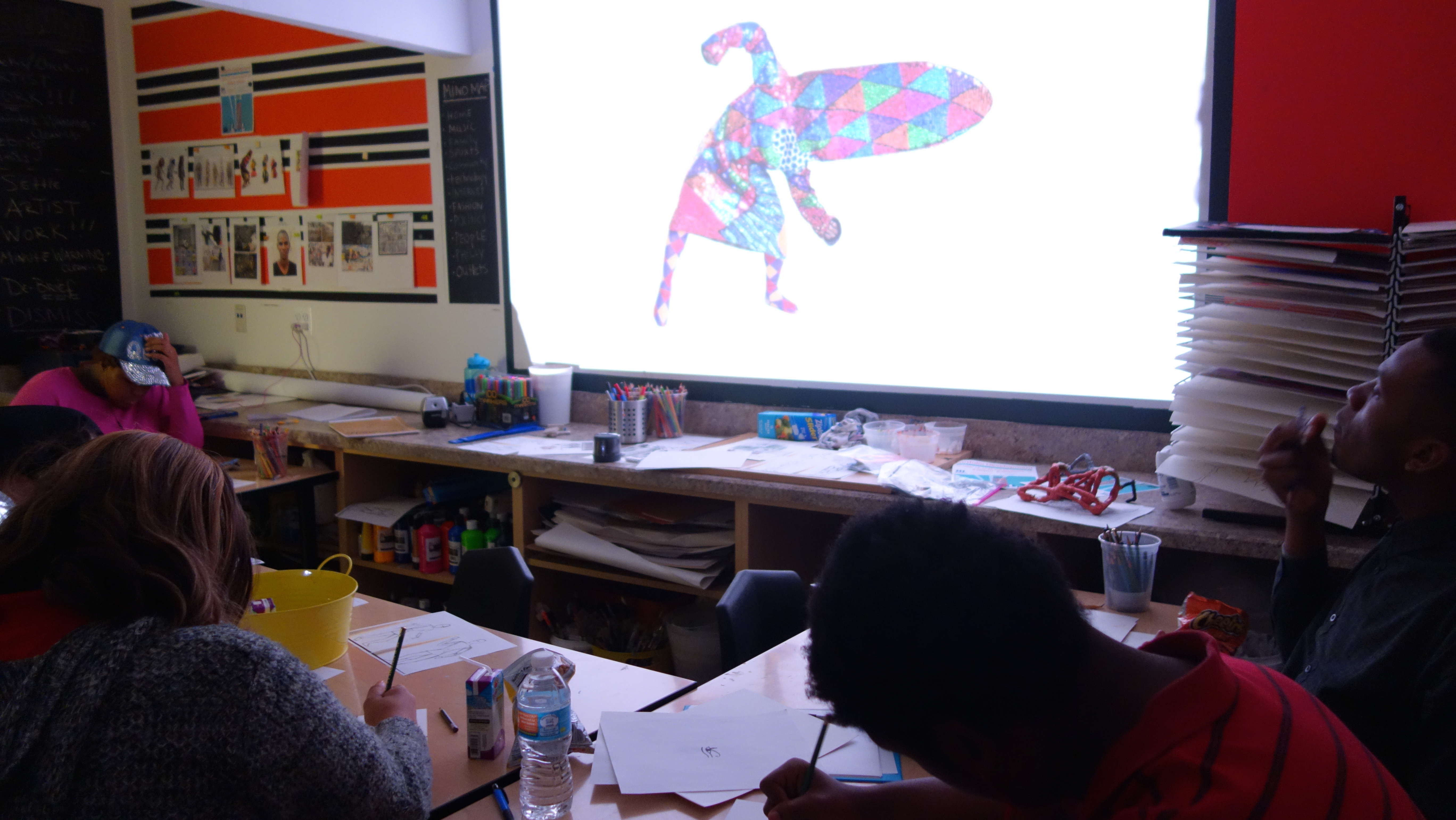A teaching artist in Philadelphia, Joseph Iacona works with adjudicated youth, trauma-impacted teens, and young people navigating homelessness and the foster-care system. Utilizing Restorative Justice practices, he introduces teens to new ways of thinking through public projects and education opportunities that bring contemporary art to students who need it most.
Joseph has served for several years as the Lead Teaching Artist for Mural Arts Philadelphia’s Youth Restorative Justice Program. He is currently a Studio Educator and the Delphi Program Coordinator at the Philadelphia Museum of Art, where he manages artist-in-residency and after-school programs with Philadelphia middle and high schools. As an educator, he’s required to bring a level of emotional understanding to all his work, which makes him the perfect Educator-in-Residence for our upcoming November/December issue on “Empathy.”
Art21: Why do you believe the thinking and practices of contemporary artists are important to incorporate in the classroom? What do students get out of it that they might not otherwise?
Joseph Iacona: Contemporary art and artists explore a vast scope of important issues through experimentation, critical thinking, and creative processes. They provide powerful content and examples for engaging with the world and help frame the big questions that can impact a classroom. Teaching contemporary art can lead students to better understand how to use inquiry as an approach for engaging meaningfully with life and its issues.
Contemporary artists speak about our world in real time, and this allows learning to move beyond the walls of the classroom and into a world in which students can begin to see that they are an important part. Without this connection to today, that investment by many youth is lost, and the impact of the lesson is undermined by the worries of a teenager, especially in the case of trauma-impacted students. Through experiencing the work of contemporary artists, students can connect with and find merit in the causes and motivations of artists and be willing to let go of their preconceptions of What is Art?, Who makes Art?, What can Art be about?
Art21: Why were you initially drawn to the Art21 Educators program?
JI: As an artist, I had been interested in Art21’s films for quite some time. Watching the process of each creator and witnessing their unique way of thinking clarified my understanding of my own practice.
Teaching in classrooms throughout Philadelphia for close to ten years and working with youth in-school, after-school, and artist-in-residence type programs, I was already in the practice of integrating art within a variety of subjects. When I learned about the Art21 Educators program I was immediately intrigued. The program seemed like a way for me to more deeply consider how to engage my students with contemporary approaches in the same way contemporary artists approach their own work.
I was also looking to collaborate, learn from, and share experiences with other educators outside of my community. Who would these individuals be? Where would they be from? What did they teach and who were their students? I had no idea. I expected that there would be a lot of diversity in background and experience, and with that, a lot of differences between us. But I did believe that these individuals would be a group of people who were working towards a change; a change in their own communities; a change in the learning and life of their students; and a change within their own contemporary practices as educators. I certainly found this and more to be true—in fact we had many commonalities to share, much to learn from one another, and even more to gain through our community as contemporary educators.
Art21: How has Art21 Educators changed your practice?
JI: Art21 Educators has enhanced the way I approach the work of teaching artistry. It has reinforced the methods of how I guide students through the learning experience and helped me to actively considering the Big Questions posed within my classroom. Though the content and design of my lessons has always been focused on what is relevant to the lives of my students, the artists I am choosing to introduce and create connections with are less predictable.
For example we may be creating a community mural, but instead of looking at painters, my students will be introduced to artists working in media such as sculpture, performance, and time-based processes. Even if the eventual goal of the lesson stays the same (paint a mural), the process of looking, thinking, and finding connections through interdisciplinary learning pushes students out of their comfort zones and creates an experience that awakens and resonates with them well beyond our classroom. This process has led to more challenging conversations that encourage students to deeply consider their own thoughts, opinions, and understanding of concepts as they navigate through uncharted territories of discovery and connectivity.
For me, the Art21 network has evolved into a long-term resource bank and forum of creative thinkers, artists, and interdisciplinary educators—all using contemporary art and artists in their classrooms. It was not just our initial experiences at the Summer Institute, but the continual support we offer each other that has created a long-lasting impression. Though we all have our own paths to follow, the time we take to share our stories with one another and continue to collaborate has meant the most. I look forward to referring, developing, and nurturing our community well into the future.
Art21: How does your work as an educator relate to the upcoming Art21 Magazine theme of “Empathy”?
JI: Over the last five years I have shifted my attention from general community art and mural-making to working with Philadelphia youth who are significantly impacted by trauma. My student body has specifically been made up of adjudicated youth in transitional life situations; many are navigating foster-care or are without a home; others are, were, or have a family member who is incarcerated; some are placed in an alternative “school” setting for the “dangers” they pose to others or themselves. Needless to say, trauma has been a central life experience with which my students can identify. Emotion plays an important and vital part in the teaching process. Seeing how our interactions and experiences shape who we are provides insight into how one might go about building relationships, understanding and engaging with others. Understanding how the brain works helps one understand how people work. A person’s emotions can be concealed from us at first glance, so planning for the needs and sensitivities of my students when creating assignments builds a safe space for them, where they reveal themselves in healthy and authentic ways. For those impacted by trauma, their attention is focused on their immediate needs, concerns, and sense of self. So finding a way for art to be relevant to their lives is important for creating connections that give art a larger purpose. With empathy towards my students’ situations, I always consider their needs and how our class time can address those needs.
Art21: What are you most excited about for the upcoming semester with Art21?
JI: Alumni from the Year 6 cohort of Art21 Educators have finished our first full cycle within the program. Though we no longer have official mentor meetings, as we did in our first year of online conversations, we are all actively continuing the dialogue, building ideas, and collaborating towards collective and personal goals. For me this is a really exciting evolution within the program because as we move into our own uncharted territory as educators (and learners), we are creating a network that links our individual work in the classroom to a shared pathway of great teaching happening all across North America. In many ways this community allows us to harmonize our voice and stories. We are truly manifesting a shared story, one which echos from classroom to classroom, heard throughout our communities and across the country.
On a personal level, I have begun a new role as the Delphi Program Coordinator at the Philadelphia Museum of Art, where I am managing after-school and in-school artist-in-residence programs for middle and high school-aged Philadelphia youth. I have taught in the program for the last five years and engaged many classrooms whilst inspired by the Art21 roster, especially when there’s overlap between Art21 artists and those featured in the museum’s collection. I now have the privilege of mentoring new teaching artists about the intersections of contemporary art and education, defining strategies to create meaningful experiences with their students, and revealing how to seamlessly integrate these concepts into their everyday practices within the classroom. It is a new and exciting challenge but I am certainly enjoying teaching other teachers.
Art21: Describe a specific work of art, artist, or exhibition that has recently inspired you or your teaching practice.
JI: Philadelphia Assembled at the Philadelphia Museum of Art has been a big inspiration for me this Fall. The exhibition connects art and civic engagement and is a great example of keeping art relevant to communities and to the future of young people in my city.
One of the big questions posed in Philadelphia Assembled is, how can we collectively shape our futures?
The exhibition articulates a collective narrative about Philadelphia through the work of hundreds of artists, collectives, organizations, structuring the work around five principles:
- Reconstructions: How do we rewrite our histories?
- Sovereignty: How do we define self-determination & unity?
- Sanctuary: How do we create safe spaces?
- Futures: How do we reimagine our tomorrow?
- Movement: How do we share knowledge?







